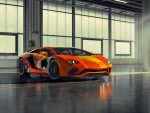History of Motorsports
Motorsports have a rich and varied history, spanning from the early days of barebones races on unpaved roads to the high-tech competitions on modern tracks that characterize modern championships. The journey through time showcases the evolution of motorsport from its humble beginnings to the sophisticated and highly competitive events that are enjoyed globally today.
Early Days
In the early 20th century, motorsport events were primarily held on public roads, with minimal safety measures in place. These races often featured long-distance endurance challenges, such as the famous Targa Florio in Italy and the Carrera Panamericana in Mexico. These races tested both the durability of the vehicles and the skill of the drivers, setting the stage for the development of motorsport as a popular form of entertainment.
Evolution of Tracks
As technology advanced, purpose-built racetracks began to emerge, offering a safer and more controlled environment for competition. The construction of iconic circuits like Silverstone in England and Monza in Italy marked a shift towards professional motorsport, with organized leagues and governing bodies overseeing regulations and safety standards.
Rise of Formula One
The pinnacle of motorsport came with the establishment of Formula One (F1) in 1950 New Porsche sports cars. F1 quickly became the premier racing series, attracting top drivers, teams, and sponsors from around the world. The combination of cutting-edge engineering and high-speed thrills has made F1 a global phenomenon, captivating audiences with its blend of speed, skill, and strategy.
Modern Championships
Today, motorsport encompasses a wide range of disciplines, from rally racing to endurance events like the 24 Hours of Le Mans. The sport continues to evolve with technological advancements in engine performance, aerodynamics, and safety features. Modern tracks offer state-of-the-art facilities for spectators and participants alike, creating an immersive experience for fans.
As we explore the history of motorsports, it’s clear that this passion for speed and competition has deep roots that continue to shape the industry today. From its humble beginnings to its current status as a global phenomenon, motorsport remains a thrilling and dynamic world that captures the imagination of millions.

Formula One (F1)
Formula One (F1) is one of the most prestigious and widely followed forms of motorsport. The current F1 grid consists of 20 drivers and 10 teams, with each team fielding two cars. The drivers range from experienced world champions like Lewis Hamilton, Max Verstappen, and Fernando Alonso to newcomers like Oscar Piastri and Logan Sargeant. The teams include both long-established outfits like Ferrari, which has been competing continuously since the first F1 season in 1950, and newer entrants like Haas, which joined the sport ahead of the 2016 season.
Drivers
- The F1 grid is filled with a mix of seasoned veterans and up-and-coming talents.
- From the unparalleled success of Lewis Hamilton to the fearless driving style of Max Verstappen, each driver brings a unique element to the sport.
Teams
- Established teams like Ferrari, Mercedes, and Red Bull bring decades of experience to the table.
- Newer teams such as Haas and Alpine have injected fresh energy into the sport, challenging the status quo.
Technology
- F1 cars are at the cutting edge of automotive technology, featuring hybrid power units, advanced aerodynamics, and state-of-the-art materials.
- The pursuit of innovation and performance drives constant evolution in car design and engineering.
Global Appeal
- F1 races take place across the globe, drawing massive crowds and television audiences.
- From iconic circuits like Monaco and Monza to modern venues in Asia and the Middle East, F1 showcases a diverse array of cultures and landscapes.
Legacy
- With a rich history spanning over seven decades, F1 has seen legendary drivers and iconic moments that have shaped motorsport as we know it today.
- The sport’s enduring appeal continues to captivate fans worldwide, making it the pinnacle of motorsport.
In conclusion, Formula One (F1) is a thrilling blend of speed, skill, and technological prowess that captivates audiences around the world. Whether it’s the high-stakes drama on race day or the relentless pursuit of innovation behind the scenes, F1 remains at the forefront of motorsport.

F1 Races and Tracks
Formula One (F1) races are known for taking place in 21 countries across five continents, showcasing a diverse selection of classic tracks as well as newer additions. Some of the classic tracks that have become iconic in the world of F1 include Silverstone, Spa-Francorchamps, and Suzuka. These tracks have a rich history and continue to provide thrilling racing experiences for both drivers and fans.
In addition to the classic tracks, newer additions to the F1 calendar have also made an impact. Locations such as Las Vegas, Miami, and Qatar have brought a fresh perspective to the world of F1 racing, attracting new audiences and adding excitement to the championship.
The 2024 F1 schedule is particularly exciting as it marks the return of China to the calendar for the first time since 2019. This reintroduction is anticipated to bring back the thrill of racing in China, with fans eager to witness their favorite drivers take on the challenging circuit once again.
Furthermore, the 2024 season is set to feature the first F1 Sprint in China, adding an extra element of excitement to the race weekend. The introduction of this new format has been well-received by fans and has injected additional anticipation into the championship.
As F1 continues to expand its global reach, it is evident that the sport is committed to showcasing top-tier racing in diverse locations around the world. This not only adds variety to the calendar but also allows fans from different regions to experience the pinnacle of motorsport firsthand.
With such an extensive and varied selection of races and tracks, F1 remains at the forefront of motorsport, captivating audiences with thrilling competitions across different continents. As new tracks continue to join the calendar and classic venues maintain their allure, the global appeal of F1 shows no signs of slowing down.
For more information on cutting-edge advancements in automotive technology, including electric vehicles (EVs), check out State-of-the-art EV Revolution.

Global Reach of F1
Formula One (F1) is not only the pinnacle of motorsport, but it also boasts a global reach that extends to 21 countries across five continents. This international racing series showcases a diverse selection of race tracks, including both classic and modern additions. The appeal of F1 on a global scale is continuously expanding, as evidenced by the return of China to the F1 calendar in 2024.
The global reach of F1 has contributed to its status as the premier motorsport event. From iconic tracks such as Monaco’s street circuit to modern additions like the Yas Marina Circuit in Abu Dhabi, F1 races take place in some of the world’s most renowned destinations. The combination of high-speed racing and picturesque backdrops creates an unparalleled experience for fans and drivers alike.
The addition of new races in countries such as Vietnam and the Netherlands further highlights the sport’s expansion into new territories. As F1 continues to push boundaries and attract new audiences, it remains at the forefront of innovation and entertainment in the motorsport world.
Moreover, the global reach of F1 offers unique opportunities for sponsors, teams, and drivers to engage with diverse markets and cultures. This not only enhances the sport’s commercial appeal but also fosters a sense of inclusivity and diversity within the racing community.
In conclusion, Formula One’s global reach solidifies its position as a truly international sporting spectacle. As it continues to expand into new territories and captivate audiences around the world, F1 remains at the forefront of motorsport innovation and excitement.
For more information on cutting-edge automotive technology, including hybrid vehicles, check out Newest hybrid vehicle releases for all the latest updates on technology, releases, and prices.

Pinnacle of Motorsport
Formula One (F1) stands as the pinnacle of motorsport, representing the highest class of international racing for single-seater cars. The history of motorsports is a testament to the evolution of the sport, from its humble beginnings to the sophisticated and highly competitive events enjoyed globally today. F1 is one of the most prestigious and widely followed forms of motorsport, captivating audiences with its exhilarating races and top-tier drivers.
With a grid of 20 drivers and 10 teams competing in races across 21 countries, F1 showcases the best of the best in the world of motorsports. The global appeal of F1 solidifies its position as a leading force in the industry, drawing fans from all corners of the globe to witness the thrilling races that unfold on some of the most iconic tracks in motorsport history.
The tracks where F1 races take place represent a diverse selection, featuring both classic and modern additions. From legendary circuits like Monza and Spa-Francorchamps to state-of-the-art facilities like Yas Marina Circuit, each track offers its own unique challenges and opportunities for drivers to showcase their skills.
As technology continues to advance, F1 remains at the forefront of innovation in motorsports. The global reach and appeal of F1 make it a driving force in shaping the future of automotive technologies, pushing boundaries and setting new standards for performance and efficiency in racing.
In conclusion, Formula One has earned its reputation as the pinnacle of motorsport, captivating audiences with its high-speed thrills and showcasing the pinnacle of engineering and driving skill. With its rich history, global reach, and ongoing commitment to innovation, F1 continues to set the standard for excellence in motorsports.
For more exciting updates on future automotive technologies and electric vehicles, check out Future car technology news.
FAQ
What is formula one (f1)?
Formula one is one of the most prestigious and widely followed forms of motorsport, featuring a current grid of 20 drivers and 10 teams.
Where do f1 races take place?
F1 races take place in 21 countries across five continents, featuring classic tracks like silverstone, spa-francorchamps, and suzuka, as well as newer additions like las vegas, miami, and qatar.
Who are some notable f1 drivers?
Notable f1 drivers include experienced world champions like lewis hamilton, max verstappen, and fernando alonso, as well as newcomers like oscar piastri and logan sargeant.
What makes formula one the pinnacle of motorsport?
Formula one is considered the pinnacle of motorsport, with its highest class of international racing for single-seater cars and highly competitive events enjoyed globally.






